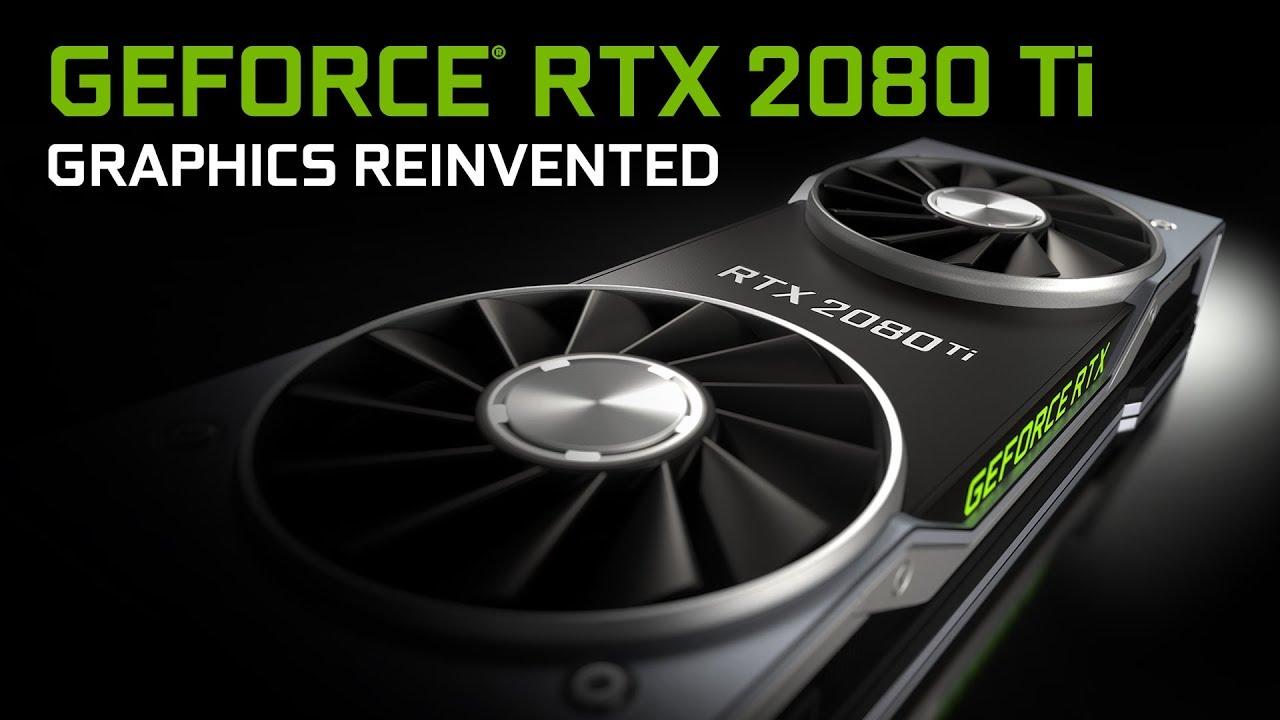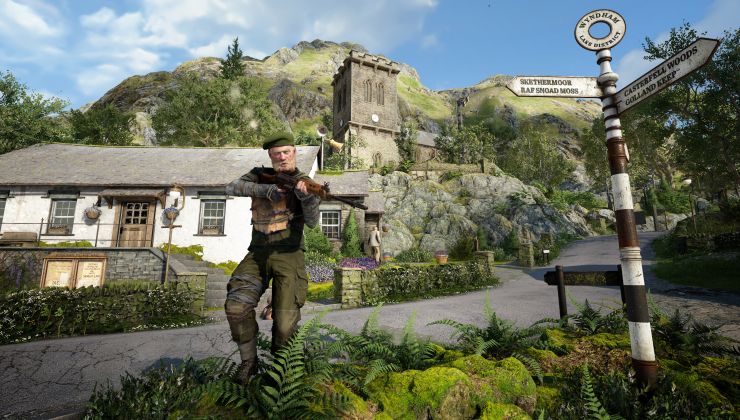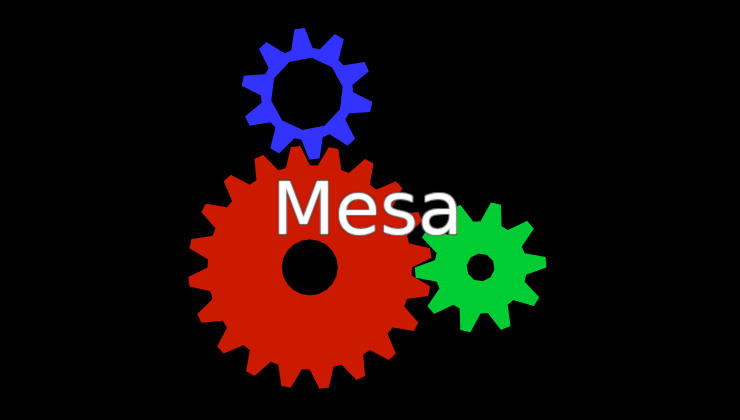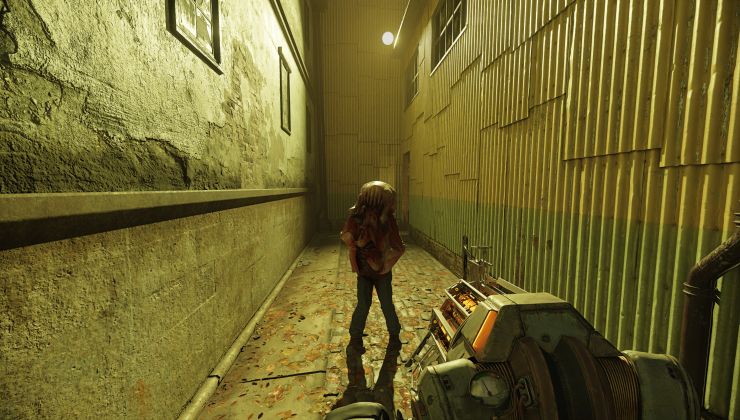The GPU race continues on once again, as NVIDIA have now officially announced the GeForce RTX 2000 series of GPUs and they're launching in September.
This new series will be based on their Turing architecture and their RTX platform. These new RT Cores will "enable real-time ray tracing of objects and environments with physically accurate shadows, reflections, refractions and global illumination." which sounds rather fun.
They will start off with three models to succeed their current top of the line:
- RTX 2070 with 8GB GDDR6, available in October
- RTX 2080 with 8GB GDDR6, available in September
- RTX 2080 Ti with 11GB GDDR6, available in September
Naturally, for a brand new series they won't be cheap!
The "Founders Edition" NVIDIA are offering will be £1,099/$1,199 for the RTX 2080 Ti, £749/$799 for the RTX 2080 and £569/$599 for the RTX 2070. From what I've seen, these editions will have a higher clock boost over the normal editions.
The normal "Reference" editions will be cheaper of course, with the RTX 2080 Ti at $999, RTX 2080 at $699 and RTX 2070 at $499. Unsure on the UK prices for the normal editions, as I can't see them listed currently but you get the idea.

Direct Link
NVIDIA generally have good support for new GPUs on Linux, so I'm sure a brand new driver is already on the way to be released soon.
See more on the official NVIDIA site, their announcement blog post and this post as well.
Will you be picking one up, will you be waiting for the normal edition or will you wait and see what AMD have to offer?
Its not the voltage thats the problem its the 24/7 running until they stop working thats the problem now it can be minor and you can solve the issues by taking the card apart cleaning the gpu and applying fresh thermal paste and you could end up with fully fuctional card or you could end up with a card that keeps cutting out everytime you start to game.
Running a card 24/7 is way less stressful on those components, because you don't have changing temps and therefor no heat expansion/contraction all the time.
Anyway I think I know whats going on, compare the mad max benchmarks of the two links and you will see two things, first is that the Vega cards now have slower performance for some reason (regression) and second is the 1070ti has had its performance increased.
Someone already replied its due different game presets. Its really too bad that phoronix never keep its configuration persistent. You can actually never compare anything. As always something changed.
I remember from earlier tests, that those Vegas always looked better in FullHD but were lagging behind in 4K. So this is another reason why they look so bad in Augusts test.
From my personal testing with my HD 7970, there are indeed some performance regressions. I see regressions at least in Dota2 Vulkan and Shadow of Mordor. Who knows where else also...
Its not the voltage thats the problem its the 24/7 running until they stop working thats the problem now it can be minor and you can solve the issues by taking the card apart cleaning the gpu and applying fresh thermal paste and you could end up with fully fuctional card or you could end up with a card that keeps cutting out everytime you start to game.
Running a card 24/7 is way less stressful on those components, because you don't have changing temps and therefor no heat expansion/contraction all the time.
Mmm again depends on how the components are being treated buying a mining card is a crapshoot with some tlc you could get lucky you could also end up with a non functioning pos
Right. It comes down to value to the buyer. I am not arguing that one should play console instead of PC. But, for some, it's more economical. And, when consoles just release, they can be better performance for your money. Now that the current gen systems have been out for a few years, yes, PC components are good for your money in comparison.$500 for the least expensive one. No thanks.
Believe me when I say that I spend 80% or more of my gaming time on PC. Still, I can't convince myself that a $500 video card is worth it when you can buy an entire console gaming system for $300. Come on.
You are not wrong, but a console has many many drawbacks but that has always been the downside of pc gaming yes it offers a far superior gaming experience than a console however upgrading a pc is expensive if you intend to keep it bleeding edge however a console is a one and done expense. But given a 750 ti @ 1080p either out performs or performs the same as a base xbox 1 and ps4 given most console games the equivlent pc setting is either med/high but in some more demanding games when its upscaled from 900p like last of us remastered its more like 1600x900 high.
Right. It comes down to value to the buyer. I am not arguing that one should play console instead of PC. But, for some, it's more economical. And, when consoles just release, they can be better performance for your money. Now that the current gen systems have been out for a few years, yes, PC components are good for your money in comparison.$500 for the least expensive one. No thanks.
Believe me when I say that I spend 80% or more of my gaming time on PC. Still, I can't convince myself that a $500 video card is worth it when you can buy an entire console gaming system for $300. Come on.
You are not wrong, but a console has many many drawbacks but that has always been the downside of pc gaming yes it offers a far superior gaming experience than a console however upgrading a pc is expensive if you intend to keep it bleeding edge however a console is a one and done expense. But given a 750 ti @ 1080p either out performs or performs the same as a base xbox 1 and ps4 given most console games the equivlent pc setting is either med/high but in some more demanding games when its upscaled from 900p like last of us remastered its more like 1600x900 high.
Not the right forum to talk about this, but whilst it's true bying components for PC is more expensive buying games is cheaper. By tens of £/€/$ in many cases. Not taking into account the payment of the network system or the fact that a game bought in PC usually can be played in different systems (Linux, Mac, Windows) and for many years to come, if not forever, thanks to software like Wine or DosBox independently of the PC you have. On the other hand, in most cases, a same game in console needs to be bought again in the new system if one does not have the original it was released on.
In the long run, gaming on PC might not be necessarily much more expensive.
That's crazy expensive, even for new GPUs.
I'm interested in when AMD are planning to make new desktop cards. Some suggested 2019.
You're looking at mid to late 2019 for the mid/low end Navi parts and sometime in 2020 for something faster...
I am curious, given the pricing, as to just how faster these cards are in games...
I think you will be paying a lot for the extra tensor cores and ray tracing cores which takes up a lot of die space and made these chips physically much larger than the previous generation, and thus I assume also more expensive to manufacture. Thing is, I don't think they will add any game performance. Until games specifically start using them, they will mostly just sit there while doing nothing, but you still have to pay a premium for them. As for real world performance increase, I expect the usual ~30% we see on average between each generation.
Yeah. Boycott nVidia completely. Intel's not much nicer, but honestly, if their upcoming discrete cards are competitive and have good open source drivers like their current integrated stuff? It's a toss-up between them and AMD.
But never nVidia. Never again, and I say this owning a GTX980. :/
You'd be surprised. Turns out money is only an effective maximizing incentive for really rote tasks.And i doubt that many miners are tech savvy enough to undervolt correctly their cards. I know some are.
I bet if gamers can follow a guide to get more fps, a miner can follow a guide to get more money. I think money is a better incentive to maximize
[RSA Animate: What really motivates us](https://www.youtube.com/watch?v=u6XAPnuFjJc)
Based on that, the drive to game well is probably a better motivator.
Last edited by Purple Library Guy on 22 Aug 2018 at 1:01 am UTC
You have valid points, but their weight, I think, might be reduced by the fact that you can resell console games. If you are someone that likes to hang onto games forever, then selling old games isn't a selling point. For me, I do not keep old games lying around. I will buy a full price PS4 game and then sell it and roll that money into a used game. I can usually do that three times before my cash snowball runs out and I need to buy a brand new game again. In the end, I play through three games for the price of one. Examples:Right. It comes down to value to the buyer. I am not arguing that one should play console instead of PC. But, for some, it's more economical. And, when consoles just release, they can be better performance for your money. Now that the current gen systems have been out for a few years, yes, PC components are good for your money in comparison.$500 for the least expensive one. No thanks.
Believe me when I say that I spend 80% or more of my gaming time on PC. Still, I can't convince myself that a $500 video card is worth it when you can buy an entire console gaming system for $300. Come on.
You are not wrong, but a console has many many drawbacks but that has always been the downside of pc gaming yes it offers a far superior gaming experience than a console however upgrading a pc is expensive if you intend to keep it bleeding edge however a console is a one and done expense. But given a 750 ti @ 1080p either out performs or performs the same as a base xbox 1 and ps4 given most console games the equivlent pc setting is either med/high but in some more demanding games when its upscaled from 900p like last of us remastered its more like 1600x900 high.
Not the right forum to talk about this, but whilst it's true bying components for PC is more expensive buying games is cheaper. By tens of £/€/$ in many cases. Not taking into account the payment of the network system or the fact that a game bought in PC usually can be played in different systems (Linux, Mac, Windows) and for many years to come, if not forever, thanks to software like Wine or DosBox independently of the PC you have. On the other hand, in most cases, a same game in console needs to be bought again in the new system if one does not have the original it was released on.
In the long run, gaming on PC might not be necessarily much more expensive.
Dark Souls III -> Uncharted 4 -> Last of Us Remastered
Ghost Recon: Wildlands -> Monster Hunter -> Far Cry 5
And remember, linux support probably will be in half a year (or more), and it wont have wayland,I'm surprised nobody's made more of this. Sure, Wayland has taken forever in snail years to arrive. But it's pretty much there now, and Canonical has finally given up on their NIH syndrome and adopted it too. Going forward, I expect X to be deprecated more and more. We're gonna need hardware that deals with Wayland, aren't we?
We're gonna need hardware that deals with Wayland, aren't we?
Yeah. Though my attempts to switch to Wayland using amdgpu so far failed because KWin Wayland session keeps crashing. I suspect I'll need to wait until kernel 4.19 to try it again.








 How to set, change and reset your SteamOS / Steam Deck desktop sudo password
How to set, change and reset your SteamOS / Steam Deck desktop sudo password How to set up Decky Loader on Steam Deck / SteamOS for easy plugins
How to set up Decky Loader on Steam Deck / SteamOS for easy plugins
See more from me